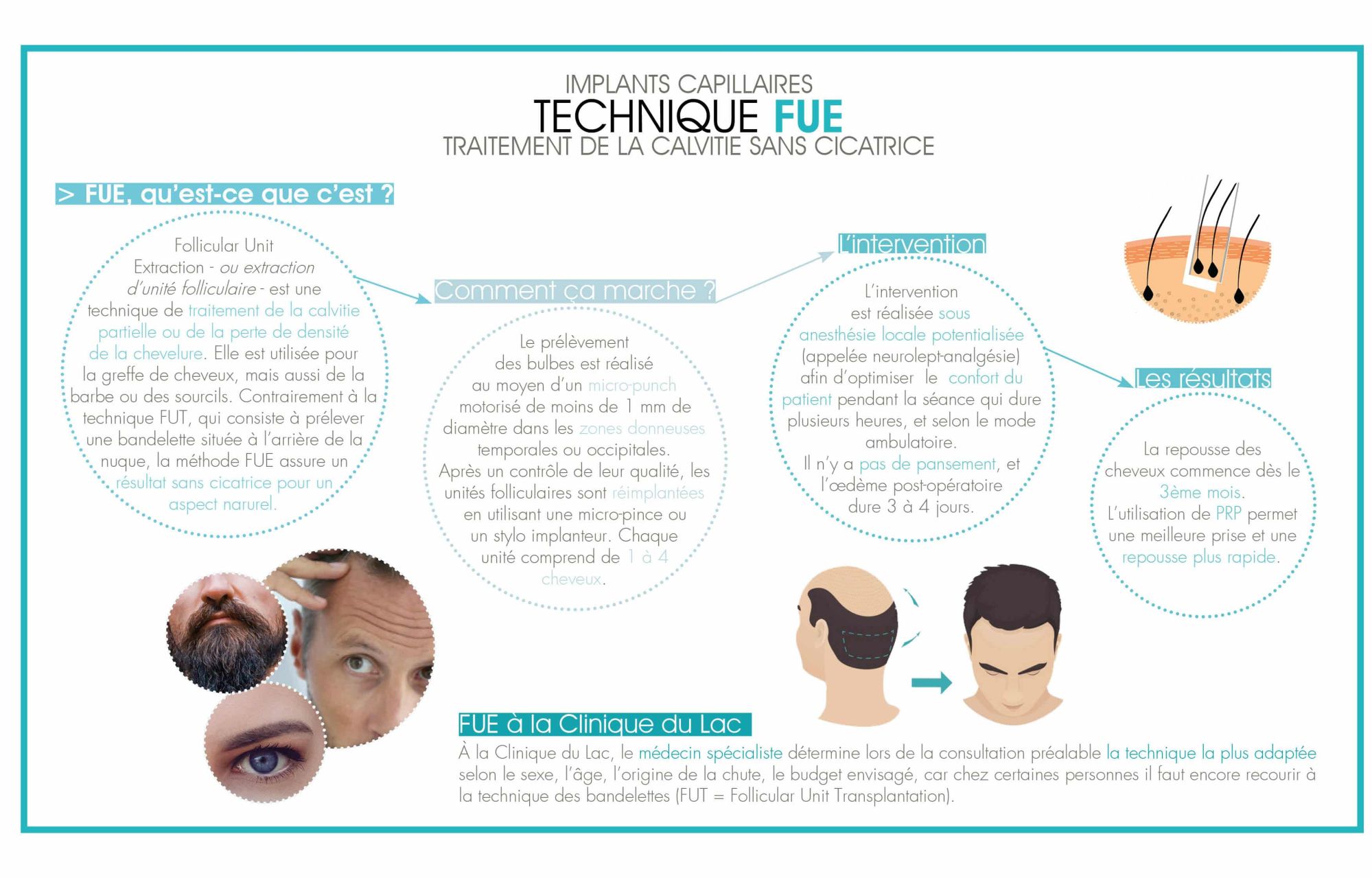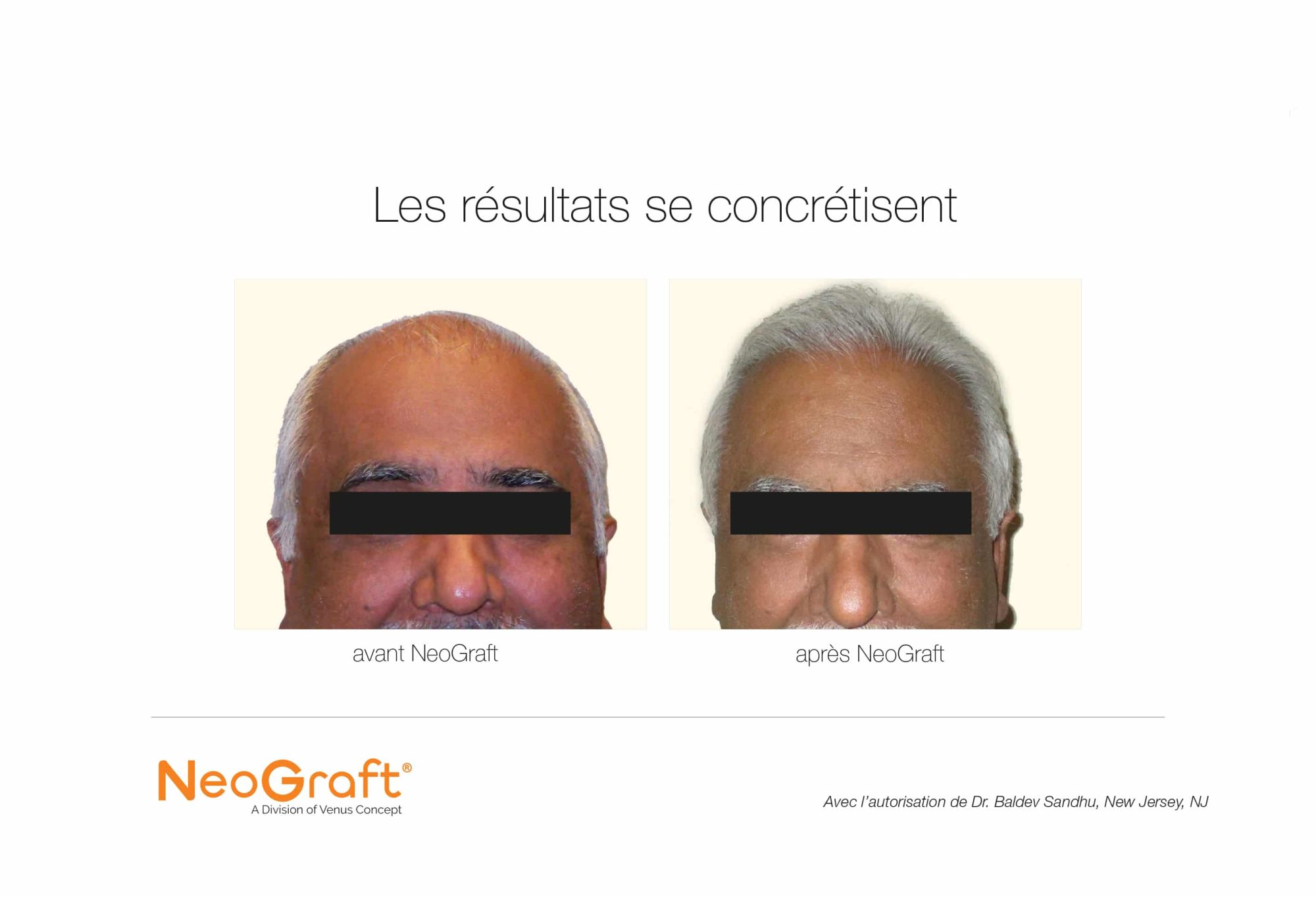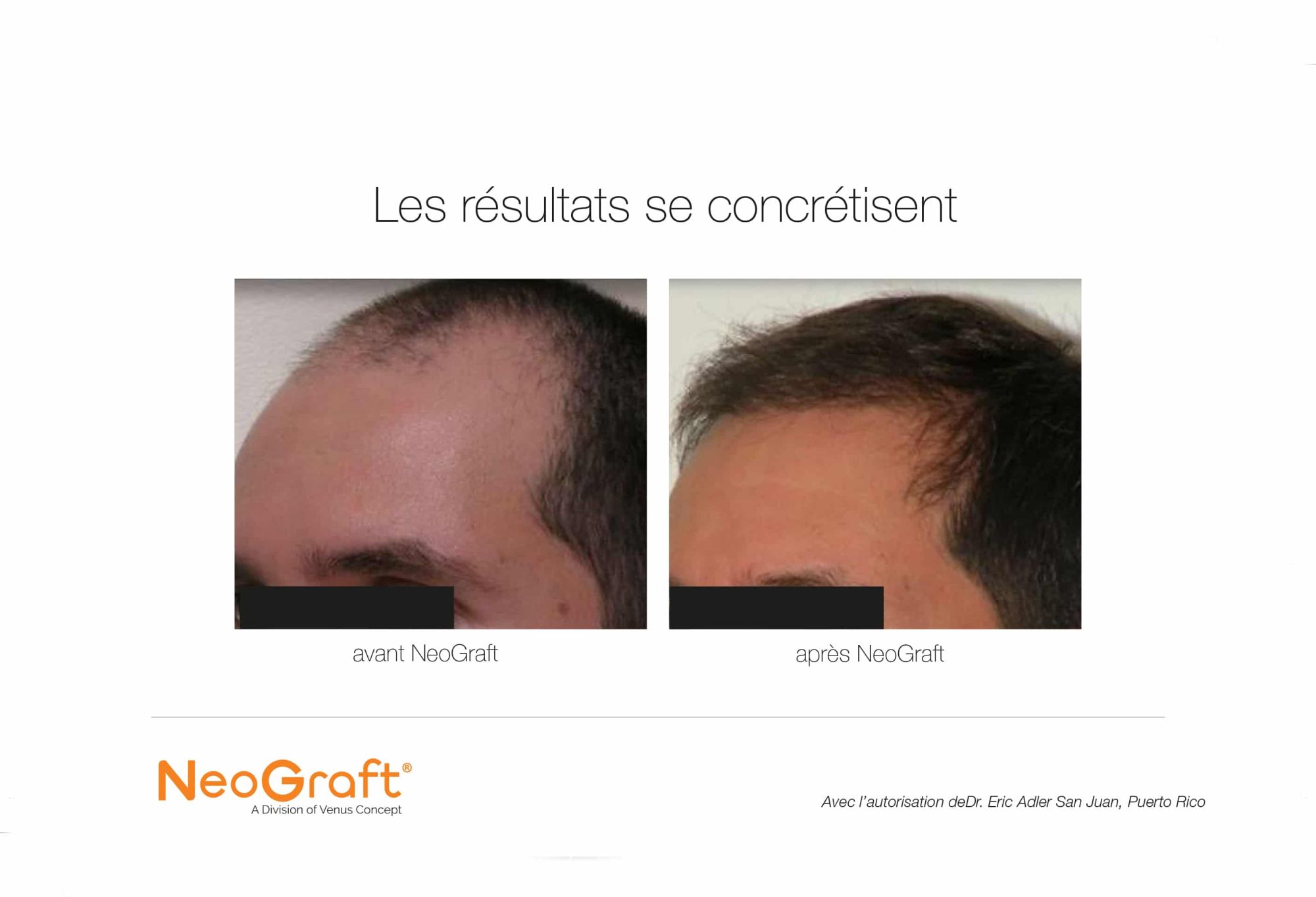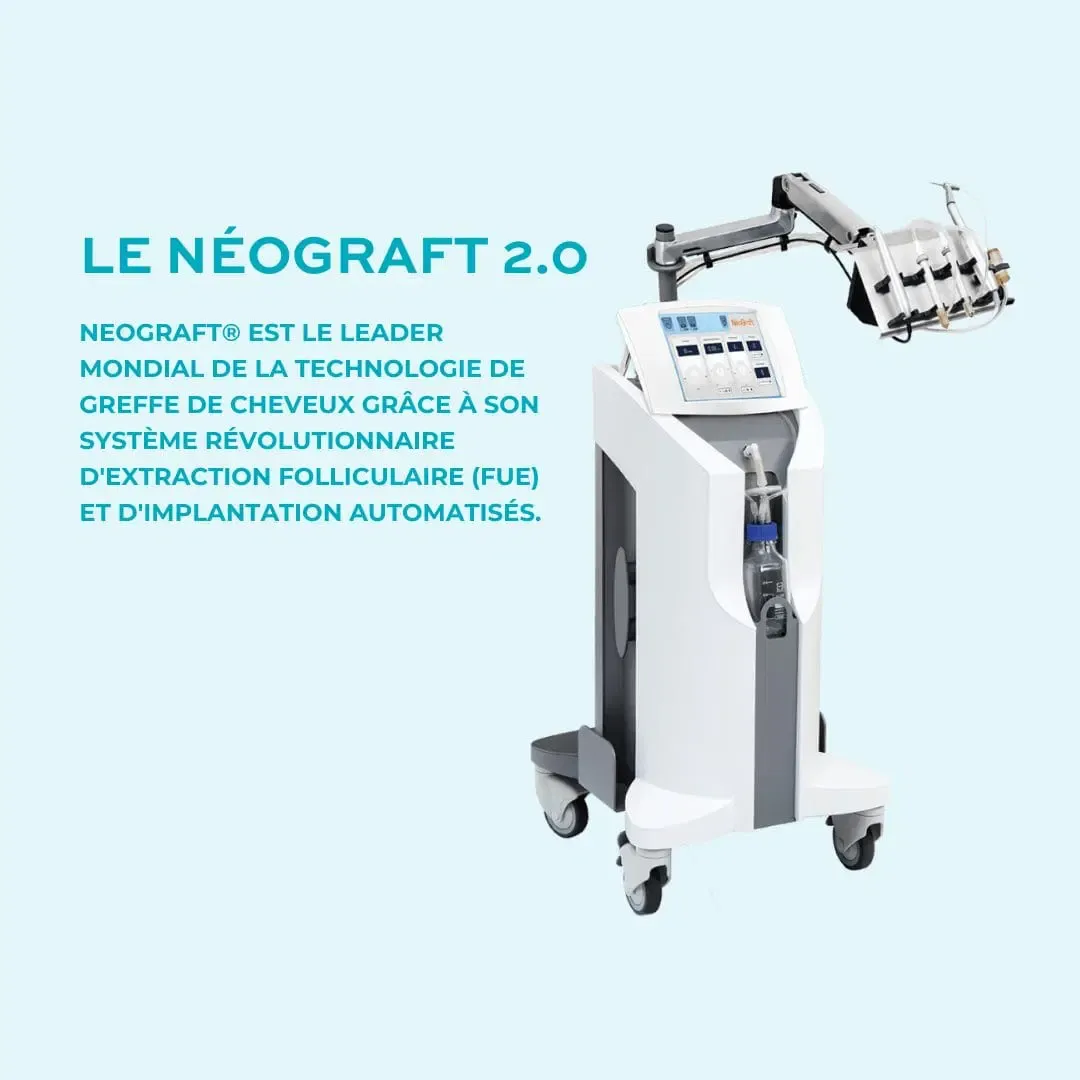Méthode FUE : informations pratiques
La méthode FUE est indiquée lorsque le patient commence à perdre ses cheveux et que la zone nécessitant des implants est limitée. Elle est aussi utilisée pour réaliser les finitions au niveau de la ligne frontale et des golfes, suite à une greffe FUT.
Il faut savoir que la technique d’implants capillaires FUE est plus coûteuse que la technique FUT (méthode de la bandelette). Tout simplement, car elle nécessite plus de temps, du fait de la durée du prélèvement puis de l’implantation des unités folliculaires une par une par le médecin. C’est un véritable travail d’orfèvre.
FUE cheveux : objectifs et principes
Le type de greffe de cheveux FUE permet de réaliser des implants de cheveux aux endroits dégarnis du cuir chevelu. Les unités folliculaires sont extraites de la couronne hippocratique, à l’arrière de la tête, seul endroit du crâne où les cheveux ne tombent jamais. Le chirurgien se sert de cette zone de prélèvement pour y prélever les greffons qui seront ensuite réimplantés aux endroits dégarnis. Comme les greffons issus de la couronne hippocratique conservent leur mémoire génétique, le patient conservera les cheveux réimplantés toute sa vie, sans risque de chute.

Le médecin spécialiste de la Clinique du Lac détermine lors de la consultation préalable la technique la plus adaptée selon le sexe, l’âge, l’origine de la chute, le budget envisagé, car chez certaines personnes il faut encore recourir à la technique des bandelettes (FUT).
Le jour de l’intervention de FUE, il est nécessaire de raser une grande partie du cuir chevelu pour que le chirurgien puisse extraire et réimplanter correctement les greffons.
L’intervention est réalisée sous anesthésie locale potentialisée (appelée neurolept-analgésie) afin d’optimiser le confort du patient pendant la séance qui dure plusieurs heures, et selon le mode ambulatoire. Le patient est donc de retour chez lui le soir même.
Le type de greffe de cheveux FUE permet de réaliser des implants de cheveux aux endroits dégarnis du cuir chevelu. Les unités folliculaires sont extraites de la couronne hippocratique, à l’arrière de la tête, seul endroit du crâne où les cheveux ne tombent jamais. Le chirurgien se sert de cette zone de prélèvement pour y prélever les greffons qui seront ensuite réimplantés aux endroits dégarnis. Comme les greffons issus de la couronne hippocratique conservent leur mémoire génétique, le patient conservera les cheveux réimplantés toute sa vie, sans risque de chute.
Chaque traitement FUE étant sur mesure, une consultation est nécessaire pour évaluer l’intervention adéquate. Après examen, votre praticien de la Clinique du Lac vous remettra un devis personnalisé et détaillé.
Vous envisagez une FUE cheveux ? Contactez sans attendre l’équipe de la Clinique du Lac pour prendre rendez-vous. Nos praticiens spécialistes de la greffe de cheveux se tiennent à votre disposition.
Une équipe d'experts
Avant la moindre intervention, les équipes de la Clinique du Lac prennent le temps de vous écouter. L’objectif est de vous proposer une solution qui convient à vos attentes et qui vous permet de corriger votre problème capillaire de façon pérenne.
Une fois que la meilleure alternative a été déterminée, la date d’intervention est fixée. Pour limiter tous les risques, il est important d’arrêter de consommer de l’alcool et du tabac 10 jours avant l’opération, ainsi que de suspendre la prise de médicaments qui fluidifient le sang (l’aspirine, le paracétamol…).
Notre équipe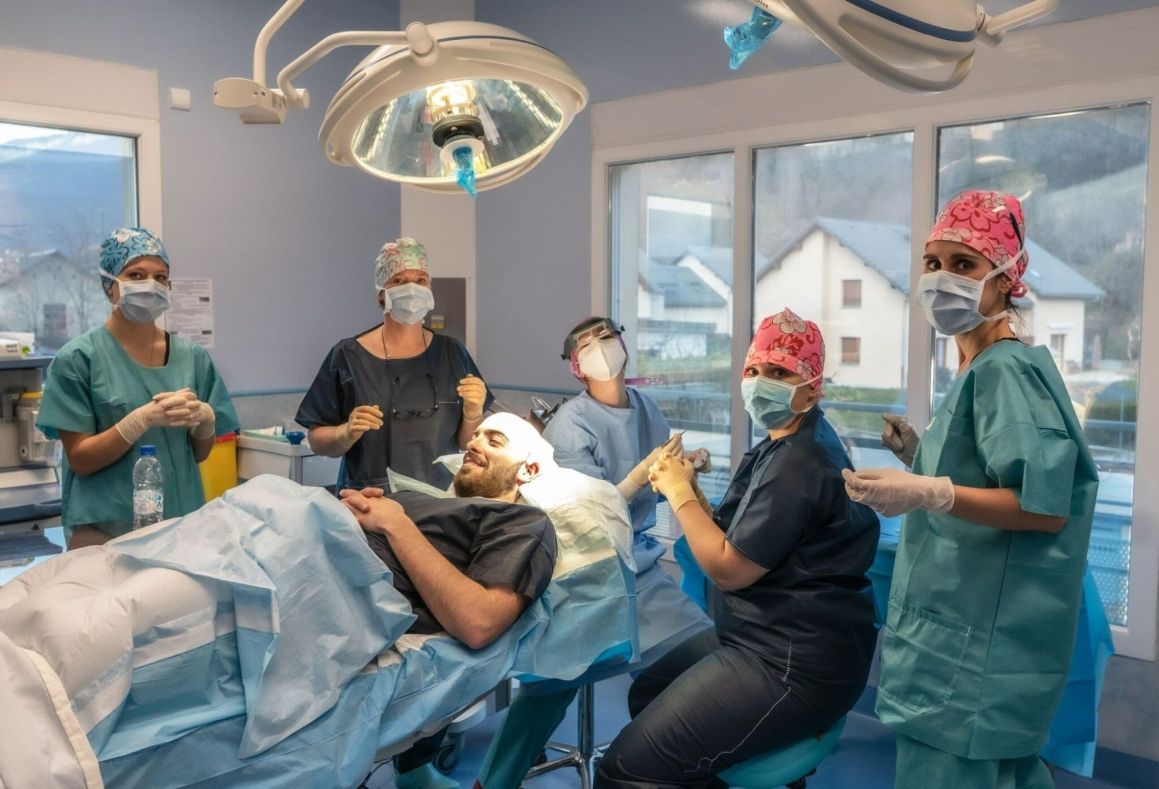
Le Néograft 2.0 : technique révolutionnaire
Chaque greffon à prélever, sur le patient installé à plat ventre, est isolé au moyen d’un micro-punch tranchant rotatif de 0.8 à 1.2 mm de diamètre.
Dans la technique classique, le greffon est ensuite libéré et extrait au moyen d’une pince.
Sur le Neograft, le punch est relié à un système pneumatique d’aspiration du greffon qui évite de le traumatiser par une extraction à la pince.
Au moment d’implanter ce greffon dans son logement de réception, une inversion du système pneumatique permet de pousser le greffon en douceur, là encore sans le traumatiser avec une pince. Le follicule et le bulbe restent intacts.
Le Neograft permet une repousse supérieure à 90%
Il permet de bien respecter l’angle d’extraction des greffons selon la direction de pousse des cheveux en zone donneuse.
Il permet au praticien de se concentrer plus sur l’aspect esthétique de l’intervention : densité de greffons et direction de pousse.
Follicular Unit Extraction – ou extraction d'unité folliculaire – est une technique de traitement de la calvitie partielle ou de la perte de densité de la chevelure. Elle est utilisée pour la greffe des cheveux, mais aussi de la barbe ou des sourcils. Contrairement à la technique FUT, qui consiste à prélever une bandelette située à l'arrière de la nuque, la méthode FUE assure un résultat sans cicatrice pour un aspect naturel.
Le prélèvement des bulbes est réalisé au moyen d'un micro-punch motorisé de moins de 1 mm de diamètre dans les zones donneuses temporales ou occipitales. Après un contrôle de leur qualité, les unités folliculaires sont réimplantées en utilisant une micro-pince ou un stylo implanteur. Chaque unité comprend de 1 à 4 cheveux. Généralement, entre 85 % et 95 % des greffons transplantés survivent et poussent dans la zone receveuse.
Les premiers signes de croissance apparaissent après environ 3 mois, avec une croissance significative visible entre 6 et 9 mois. Les résultats finaux peuvent être observés après 12 à 18 mois. Grâce à notre expertise et notre plateau technique, les résultats de la greffe FUE sont excellents.
L'intervention est réalisée sous anesthésie locale potentialisée (appelée neurolep-analgésie) afin d'optimiser le confort du patient pendant la séance qui dure plusieurs heures, et selon le mode ambulatoire. Il n'y a pas de pansement, et l'œdème post-opératoire dure 3 à 4 jours.
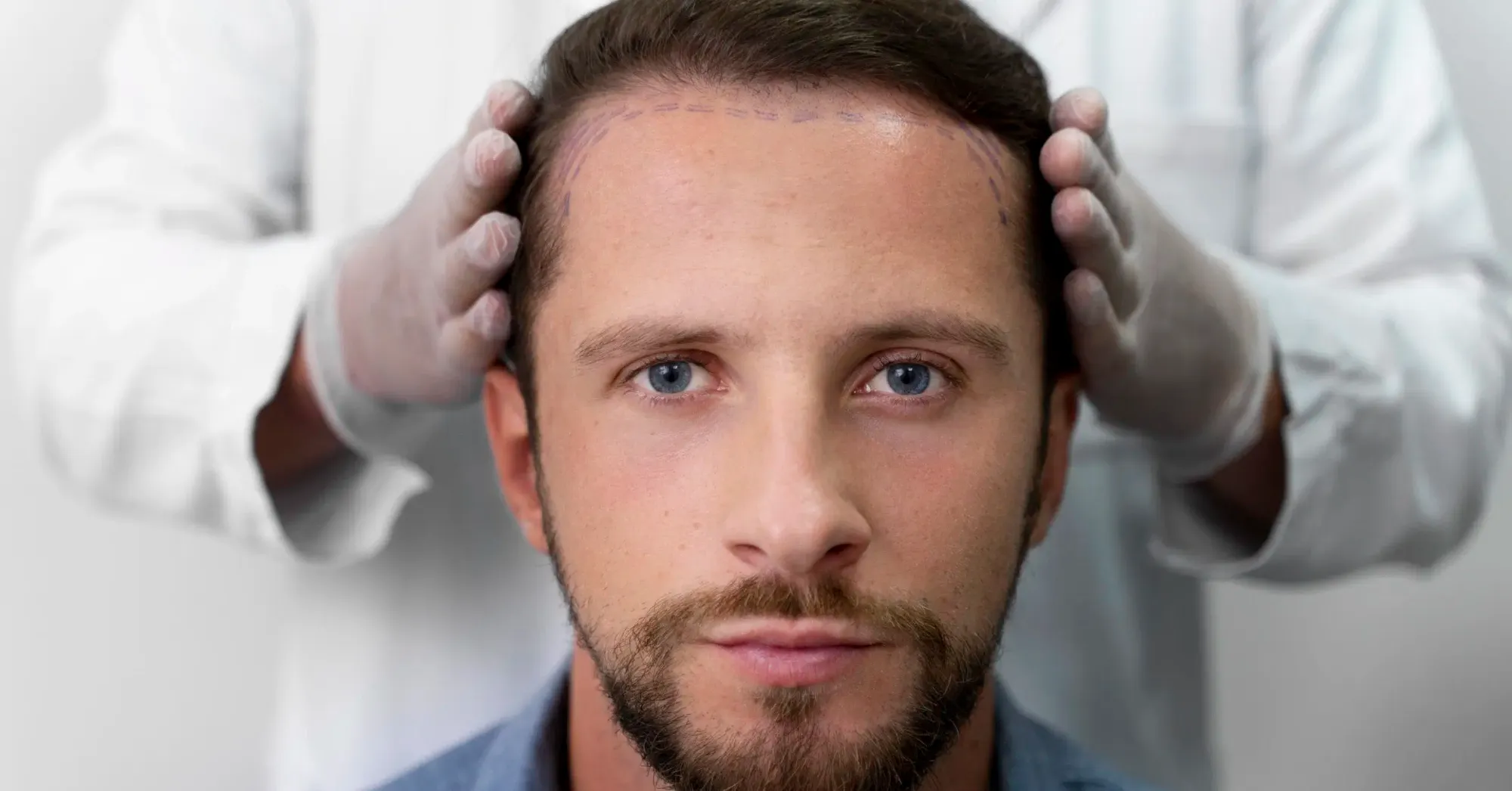
FAQ sur la greffe FUE
Quelle que soit la technique, la micro-greffe de cheveux est une opération principalement réalisée sous anesthésie locale, mais elle peut avoir lieu sous anesthésie générale pour les plus longues interventions. Le choix du type d’anesthésie se fait de concert avec le patient, le chirurgien et l’anesthésiste.
Les greffes de cheveux durent en moyenne 4 heures. Elles sont directement réalisées en chirurgie ambulatoire à la Clinique du Lac, vous permettant ainsi de rentrer chez vous le jour même de l’opération.
La technique de greffe FUT, aussi appelée prélèvement par bandelette, est la plus pratiquée dans le monde. Elle consiste à prélever une bandelette de cuir chevelu dans la nuque d’une hauteur de 1 à 2 cm pour une largeur de 20 à 25 cm. Depuis cette bandelette, on vient extraire les greffons (ou unités folliculaires), pour les transplanter un à un sur les zones dégarnies. Ce type d’opération laisse une cicatrice au niveau du prélèvement. Cette dernière peut être facilement recouverte en laissant pousser les cheveux.
La procédure elle-même est réalisée sous anesthésie locale, donc la douleur est minimale pendant l’intervention. Après la greffe, les patients peuvent ressentir un léger inconfort ou une douleur modérée, qui peut être gérée avec des analgésiques prescrits par le chirurgien. La plupart des patients trouvent que la douleur est supportable et diminue rapidement dans les jours suivant la procédure.
Pour une greffe de cheveux, un prix fixe est difficile à déterminer. Chaque cas étant unique, le prix varie en fonction de l’ampleur de la micro-greffe à pratiquer, mais aussi des techniques retenues.


